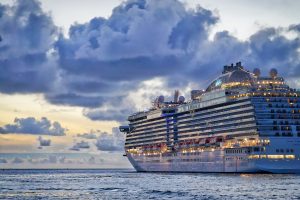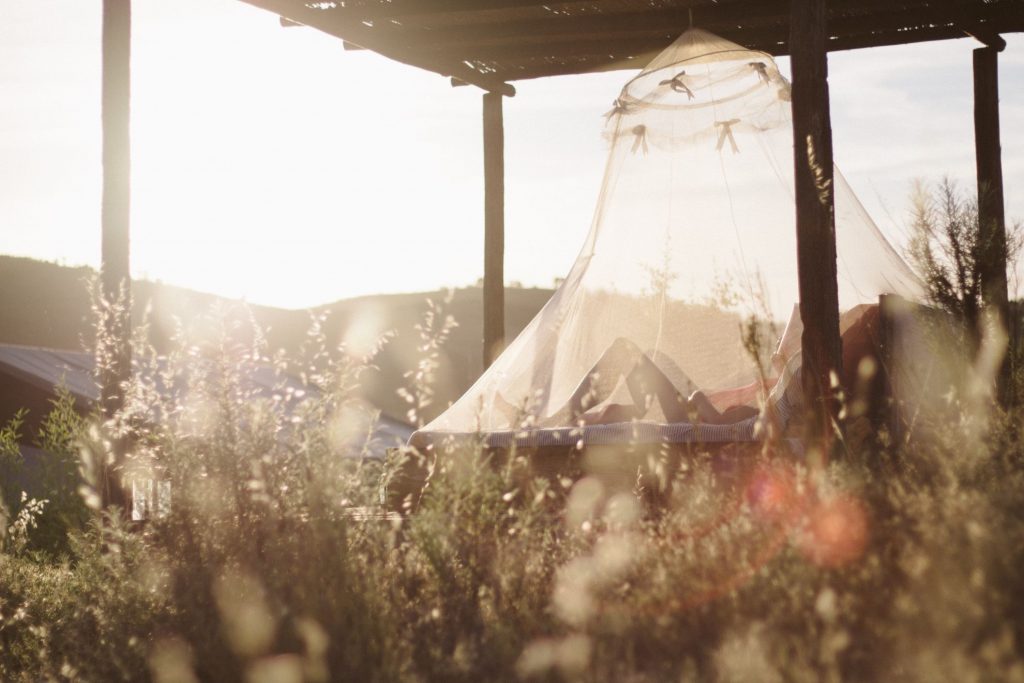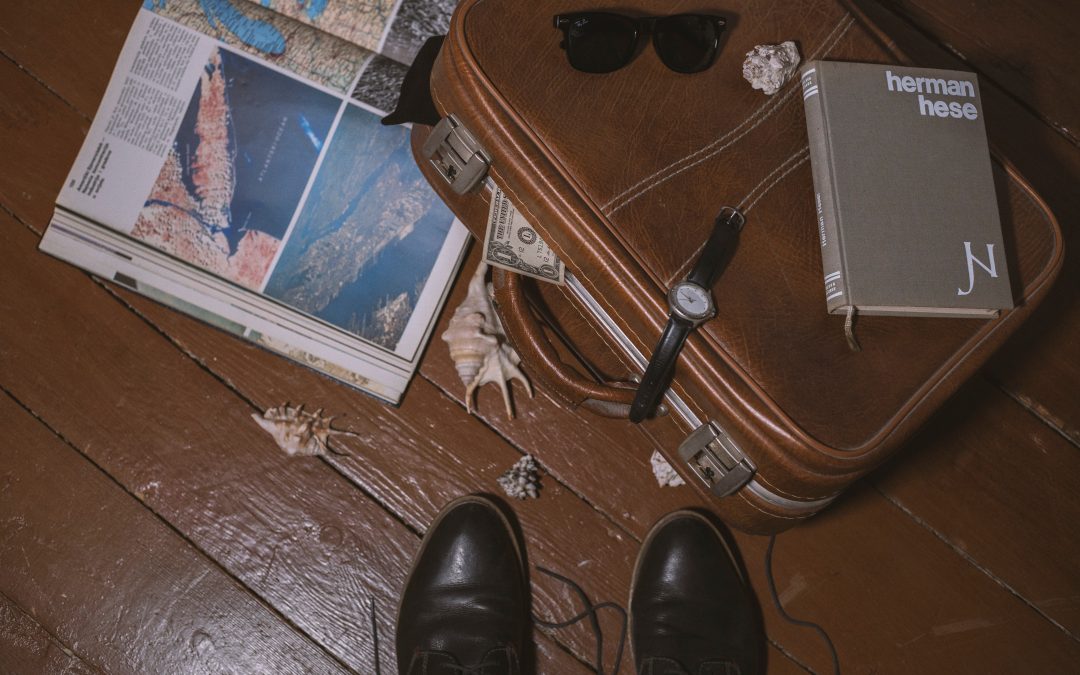International travel with children can be a wonderful family experience. Cruising allows families to visit a number of countries in a short period of time, while hotels near ports of call provide an opportunity to explore and learn about new people and places in a controlled environment. And modern cruise ships are equipped with an abundance of activities and precautions to ensure everyone onboard is entertained and safe.
That’s not to say there are not still risks. Deaths do occur at sea, though the most common cause is from natural causes, according to the website Cruise Ship Deaths. Deaths from accidents onboard or while in port are extremely rare but newsworthy when they happen, such as the deaths of 11 passengers while on a bus excursion in Mexico in 2017. And despite the touristy look and feel of most ports, your family will still be in a new country and will have to contend with the risks and challenges inherent in international travel. Do not assume that you will be able to pay with U.S. dollars or a credit card, or that everyone will speak English, or that the food and drink will be safe to consume wherever you go. Remember, it isn’t always as easy as finding parking at the port of Miami!
With some preparation, knowledge and good common sense, your family’s international adventure can be fun and safe for everyone.

Before your Trip
Before heading off on your cruise, take the time to research the countries and ports you and your family will be visiting. Reviews on travel sites, news articles and the U.S. State Department’s published Travel Advisories are all useful tools to become better informed about your destinations.
For every question you can ask about a new country, there are simple solutions available with a little advance preparation.
What is the language spoken?
If not English, install an app like Google Translate on your phone in order to easily translate signs, food labels and useful phrases. Teach your kids a few helpful phrases as well, such as “please” and “thank you.”
What currency do they use?
If you plan to visit a country that does not accept U.S. dollars, and you expect to purchase items with cash (such as at an open-air souvenir market, where credit cards are not always accepted), visit your bank at least two weeks before your travel plans to order local currencies. Currency converters at sites like XE.com can quickly tell you how far your dollars will go. Make sure you explain the different currencies and their values compared to the dollar to your children, and even give them a little pocket money to pick up a memorable souvenir while in port.
Will I have cell service or data in those countries?
Call your cell service provider to find out what international plans they offer. Some will allow you to add international calling, texting and data temporarily for a fee, while others like Sprint provide free texting and 2G data overseas. Be sure to add this to your kids’ phones as well to enable communication in ports.
Will I need a power adapter to charge my phone?
Rather than investing in a set of power adapters or expecting that your phone will stay charged while in port, pack a charged power brick or two so that you and your kids can charge your phones in the event of an “I texted too much and now my battery is dead” emergency.
Are there any State Department issued Travel Advisories for this country?
For most countries, the State Department issues what is known as a Level 1 Advisory, exercise usual caution. There may, however, be circumstances under which a country’s risk changes due to economic or natural disasters. Visit the State Department website and look up your planned ports just to be sure. If for any reason you don’t feel comfortable visiting a port of call, enjoy a day on your half empty cruise ship that day instead.
What precautions do I need to take when eating or drinking in this country?
Because most ports of call are heavily touristy, eating at any of the local (or chain) establishments should be completely safe. Do exercise caution, however, when straying off the beaten path. If you’re not certain if something is safe to eat or drink, don’t. Make sure to explain the same to your kids. According to the Centers for Disease Control, 30% to 70% of travelers get traveler’s diarrhea. Better safe than sick in a tiny cruise bathroom for the rest of your journey.
What do other people like to do in this port?
Travel sites are full of user reviews and recommendations for local attractions. The excursions offered by your cruise ship will always be well-vetted, and while they can be a little more expensive, they are guaranteed though your cruise line. If you’d rather strike out on your own, doing some research in advance will help you to make the most of your time once in port. Excursions are a great way to try something new as a family. But note: if you know before you cruise that you want to take a specific excursion, book it in advance. Lines to book excursions once on board can be very long and slow-moving.
How much time will I have in this port?
Do you have four hours in this port or 12? The amount of time will make a huge difference in the amount of activities you can expect to do. Be sure to build in travel times to and from the port in both directions, including the amount of time needed to disembark and re-embark. (There can be longer lines the later in the day you wait to embark.)
What time zone will I be in?
You’re cruise may take you to countries with different time zones. It’s important to note, though, that cruises my ask you to continue to observe the time at your home port while on the ship and in foreign ports. Be sure you and your kids know what time your cruise line expects you to return to the ship so your ship doesn’t leave without you.
The answers to these questions will allow you to better prepare, and preparation means a safer and more relaxing, enjoyable trip for all.

Once Onboard
Even the smallest modern cruise ships are huge, carrying anywhere from 2000 to 4000 passengers. That can mean big crowds at every turn, whether getting to your room, to a meal or hanging out on deck. Explain to your kids before you board your expectations for their safety. Every child is different, and you will have to adjust your expectations accordingly.
Communication
Luckily, now there’s an app for that. Every cruise line has their own onboard app that can be installed on any phone and used to facilitate scheduling, communication, and activities (sometimes for a small fee). If your kids are old enough to explore the ship on their own, these apps will allow you to reach them at any time for any reason. The app will also tell them when and where to park for onboard activities. Even with this technology, consider using the buddy system when possible for those times when one kid left his phone in the room, or let her battery die, or just didn’t feel it vibrate. And there is safety in numbers besides.
Pools and rails
Be sure that your kids understand the dangers posed by pools and a ship’s railings. Cruise ship pools can be much smaller in size and often crowded, making it harder to keep track of a child in the water. According the the World Health Organization, drowning is the third leading cause of accidental injury death worldwide. If your kids are in the pool, sit nearby where you can easily see them, and if they are older and at the pool without an adult, the buddy system is essential here as well.
Most deaths on a ship (besides those from natural causes) occur from someone falling overboard into the sea or onto levels below. Be sure to communicate clear safety rules for railings and that railing must never be climbed on or over. Make sure your kids know, too, to help enforce the same rules with any other kids they’re traveling with. Cruise lines will sometimes close their pools during rough seas to avoid injury to passengers. Be aware of those times when the pool may be closed in order to make other arrangements for the day’s activities.

Kids’ Clubs
Every major cruise line has a kids’ club, all of which offer a variety of activities, including dance parties, scavenger hunts, playscapes, life-sized board games, foosball tables and more. These clubs cater to kids ages 6 months to 17 years, and participation in many of the activities is included in the price of your cruise. You can compare the various cruise line kids’ clubs on sites like Cruise Critic or Family Vacation Critic.
Be aware, though, that while some kids love the organized merriment of a kids’ club, others will find it boring, or only enjoy it in short bursts. Do not embark on your cruise expecting to not see your kids during the time spent at sea!
Instead, explore the full ship as a family during your first night onboard, and identify what activities are available in addition to the kids’ club. Most ships have an arcade, an outdoor sports area with mini-golf, basketball and ping-pong, a library with a supply of board games, and movies on the main deck most of the day. Remind your kids to pack a book, craft or other activity to enjoy in the event of rain or cold weather.
Your “Mustard” Station
Every section of a ship is assigned a muster station (which your kids will no doubt call their mustard station), the place to which passengers evacuate in the event of an emergency. These assigned stations are not-flexible, so it’s important to be informed about your muster station when checking in. On your first day aboard, expect to participate in a muster drill.
It can happen that two adjoining rooms can be assigned to two different muster stations, meaning that in the event of an emergency your kids may be required to go to another part of the ship than you. You will likely not be okay with this, especially in the event of a true emergency! To avoid this happening, be sure to ask that your assigned rooms share the same muster station. In the event of an emergency evacuation, staff at the kids’ clubs will usually bring your children to you at your muster station.

Stranger Danger
As previously mentioned, you will spend your time at sea with two to four thousand of your newest friends, and not all of them will be your favorite people.
As in any crowded situation where there’s lot of strangers around, let your kids know how to safely interact with others. Make sure they know not to go into the room of a guest they do not know. Tell them to use the buddy system, especially when wandering the halls of your ship during the times they are more deserted. Instruct them to let you know of any behaviour they observe or experience that makes them feel uncomfortable. Report to staff any guests who are inappropriate.
But also make sure your kids exercise simple courtesies while onboard. The staff on cruise ships work long, hard days, often for little pay. JobMonkey.com explains that, “Because work weeks on a cruise ship are typically longer than your typical work week, a cruise ship employee can expect to work over 45 hours in a week on average.” Tell your children to use “please” and “thank you” in their interactions with staff. The dining rooms and buffet areas will be especially bustling, so keep an eye out that your kids are not disrupting staff as they try to work or the dining experience of other guests.

When you Reach your Destination
Welcome to paradise! Ready to go ziplining in the jungle? Dune buggying on the beach? Snorkeling with the stingrays? Bicycling in the ruins? Or did you book a day at an all-inclusive resort so you can lay on the beach while the kids build sand castles? Whatever excursions you’ve chosen, each has its pros and cons. But as with all things, some planning and prep time will help to minimize the cons while maximizing your family’s fun.
Document Everyone, Backup Everything
Before leaving the port for the day, take a photo of each family member in case, god forbid, anyone gets lost or separated from the group. The photo will show anyone who asks exactly what that person looks like and is wearing without your having to remember. Also bring photos of your passport/travel card/Global Entry card in the unlikely event you miss reboarding and are stuck in paradise for longer than expected. But leave your originals locked up in the safe in your room. No reason to risk them being lost or stolen.
Millions of cell phones are lost every year, so also be sure to protect your phone before disembarking. The popular tech site Wired.com advises smartphone users to prepare for the loss of a phone by turning on remote tracking, activating your lock screen, and backing up all your data.
Have a Family Safety Plan
As soon as you disembark, stop to take a moment and orient yourselves. Where are you in relation to attractions on shore? Where is the nearest taxi stand, information booth, or other landmark where you could meet in the event you got separated? What is the name of your ship and what time do you re-embark? (There will likely be multiple ships in port at the same time, sometimes from the same cruise line.) Does everyone have a working phone? Be sure to install apps like Life360 or Find my iPhone to enable GPS tracking of everyone in your family with a phone.
Sunblock, bug spray, snacks and water!
No one can enjoy themselves when they are sunburnt, getting bitten by bugs, hungry or thirsty. At breakfast the morning of an excursion, grab some extra fruit, pastries or other portable snacks to pack for the day. Bring a water bottle for each member of your party. Pack bug spray and sunblock (that you hopefully brought from home so you didn’t have to pay cruise ship gift store prices!). These are the makings of a good day. Even if everything else doesn’t go to plan, a fed, hydrated crew will at least be in good spirits. Mosquito-borne illnesses are on the rise, especially in tropical climates, so visit the CDC Travelers’ Health website for information specific to your destination.

Stick to the Beaten Path
Traveling to Port Canaveral from Orlando can be an opportunity to explore new places, to take the path less traveled and to see how people live in other countries. But on a cruise? Not so much. While on shore, your family will have limited time to explore. Your ship will also be parked at a port that has been curated to cater to tourists. So hang that camera around your neck and pull up your tube socks, because it’s time to go full tourist! Expect to spend your time on shore primarily with others from the U.S. or with locals who have spent years delivering the same speeches to tourists in order to get the most laughs and best tips.
That’s not to say you can’t have a great time. By signing up for a shore excursion, you are extending your trust in your cruise line from the ship to the shore. If you enjoy everything they’ve had to offer onboard, then you will likely also enjoy the experiences they’ve picked for you in port. Still not sure how to spend your afternoon in Cabo? Ask a crew member. Many of them have tried a variety of shore options and can point you to their favorites. Prepaid shore excursions also mean that you will be paying in advance for your activities and will not have to haggle once on land with people who may or may not have your best interests at heart.
Stay Together
Maybe your 10-year-old wants to swim with the dolphins while your teens want to explore underground caves? Sorry, kids, but someone is going to have to compromise. It may sound easy to just send one parent with the 10-year-old and the other with the teens, but this defeats the purpose of your trip and increases the risk of complications.
The tourism organization Visit Anaheim recently commissioned a study that found that, after polling 2,000 parents of school-aged children, the average family spends less that 40 minutes together on school days. One of the simple pleasures of taking a cruise with your family, much like taking a road trip, is being trapped together in one vehicle, in this case on a ship. Unlike at home, many of the distractions have been removed to create an opportunity for true family time. Let the same principle carry over onto shore and spend the day together having a shared experience.
This also ensures that if your bus breaks down or someone gets hurt, you can deal with any emergencies together. No one wants to end their day waiting and worrying about whether or not the rest of their family is going to make it back on board in time.
Bonus: if the kids can’t agree on how to spend the day, then the parents get to choose. Seems only fair since you already paid for everything.
Have a Designated Adult who Stays Sober
This one may not seem fair since you already have a designated driver — the ship’s captain — to see you safely home. But in port different rules apply, and even though you may rely solely on taxis during your daytrip, a different language, culture and landscape can be much more easily navigated while sober.
That’s not to say one of you can’t have a margarita while the other does tequila shots out of a dolphin’s belly button. Just be sure to agree in advance who will be the one to walk back to the ship at the end of the day while the other staggers behind with the worn out kids. You’re much more likely to be attentive and safe with your wits about you, which your kids will appreciate. And the next day, when your spouse is moaning from a hangover, you will still be well enough to enjoy the breakfast buffet.
A Safe Cruise is a Fun Cruise
Your family cruise can be a relaxing and safe adventure for the whole family. By following some simple guidelines, you can ensure that everyone who embarks with you arrives safely back home at the end of your trip.

Sarah Doolittle
Sarah Doolittle is an avid traveler and cruiser. When not corralling her four kids, she’s planning her next domestic or international adventure. Sarah is a frugal traveler and a friend to all animals.


There are currently several bracelet type devices on the market that make a shrieking sound when they come in contact with water. Having your child wear one can help alert the cruise line staff when and if your kid goes into the water.
The article is so helpful to understand how to protect your kids while cruising and its really appreciated.